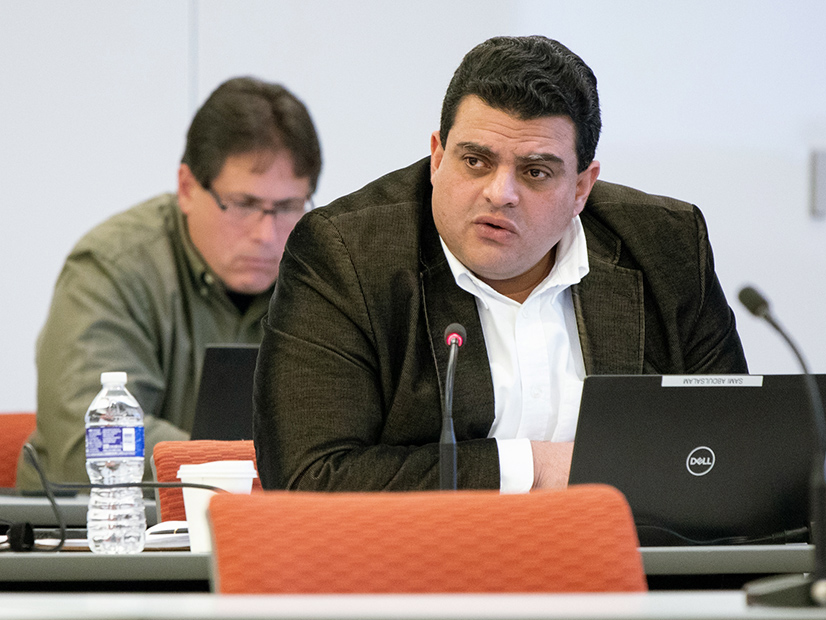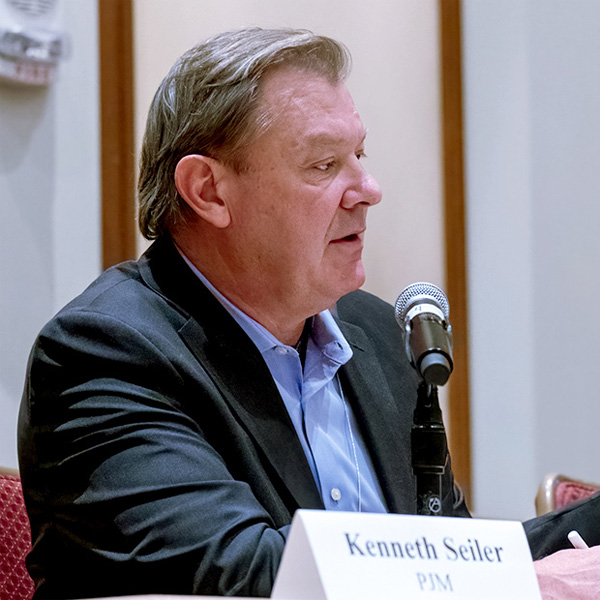VALLEY FORGE, Pa. — PJM has proposed around $5 billion in transmission upgrades to address data center load growth and generation deactivations primarily in the northern Virginia region identified in the third window of the 2023 Regional Transmission Expansion Plan (RTEP). (See PJM Shortlists 3 Scenarios for 2022 RTEP Window 3.)
PJM Senior Vice President of Planning Ken Seiler told the RTO’s Transmission Expansion Advisory Committee (TEAC) the proposal would meet energy needs through the 2027/28 delivery year while providing long-term benefits to the grid by facilitating interconnection of new resources.
“It’s well-documented that there’s going to be a lot more transmission required as we go through the energy transition, and this is an area that’s a prime example of that,” he said. “We’re going to need a number of projects to meet those needs.”
The proposal largely tracks the 500-kV combination proposal PJM presented during the Oct. 3 TEAC meeting, which would build new 500-kV lines from northern Virginia out to the Peach Bottom substation to the northeast, the 502 Junction substation to the northwest and the Morrisville substation to the south.
PJM created the combination proposal by merging portions of the 72 proposals it received in the competitive planning process and directing some upgrades to infrastructure to address needs not resolved by any of the proposals. The final product includes work assigned to Dominion, FirstEnergy, Exelon, LS Power, NextEra, Transource and the Public Service Enterprise Group (PSEG).
The largest portion of the work is centered on “Data Center Alley” near Dulles Airport in Loudoun County, with over $1 billion of projects assigned to Dominion in that region. The scope includes two new 500/230-kV substations and upgrades to the Mars substation. PJM’s Sami Abdulsalam said the lines between those substations would form a ring around Data Center Alley to feed energy into the facilities.
The proposal also includes upgrades to several 230-kV lines and substations in Virginia running between the Dooms and Gordonsville substations, as well as to the Summit D.P.-Ladysmith CT 230-kV line. The work also includes a 500-kV line from the Otter Creek facility to the High Ridge substation.
Abdulsalam said the RTEP window includes a significant number of deactivations, including the 1,295-MW Brandon Shores generator outside Baltimore. Given the lack of resources in the interconnection queue to replace Brandon Shores, new lines will be needed to prevent reliability issues in the Baltimore Gas and Electric (BGE) zone, he said.
“If the transmission is delayed, something will have to give. Either load needs to be dropped … or some generation shows up. We don’t currently have any generation in the queue” that would come online in time, he said.
About 11 GW of generation is expected to retire within the Window 3 time frame, which extends to 2028, while 7.5 GW of new data center load will come online.
The proposal is expected to cost about $4.9 billion based on the cost estimates included in project submissions, while the independent estimates of those projects amount to $5.4 billion.
Consumer Advocates Frustrated
A second first read of the proposal is scheduled for the Dec. 5 TEAC meeting, after which PJM plans to bring the recommendation to the Board of Managers for approval.
Greg Poulos, executive director of the Consumer Advocates of the PJM States (CAPS), said advocates had been frustrated when previous RTEP windows were approved by the board in July with little time after the second read for stakeholders to submit comments.
“There was significant frustration about the time given after the second read and what is the purpose of a second read,” he said.
Philip Sussler, of the Maryland Office of People’s Counsel (OPC), said the RTEP process could be improved by creating a clearer way for comments to be submitted and for more documents to be public. Several members of the public requested information about how to write letters to the Board of Managers during the meeting.
Residents who live along the proposed pathways questioned whether several aspects of the work would require new rights of way and expressed doubt about the feasibility of multiple transmission owners requiring certificates of public convenience and necessity (CPCNs). Maryland ratepayers also questioned why needs primarily in Virginia were being solved with transmission buildout across Maryland.
PJM’s Augustine Caven said staff considered several factors in forming the proposal, including siting and permitting challenges. Other factors include cost containment provisions, constructability, outage coordination, development on new versus disturbed land and scheduling risks such as land and material procurement.
“PJM recognizes the need for working the permitting process, the regulatory process in four states and that’s something that we’ll definitely have to tackle … but I think the idea here is to move forward with those conversations as quickly as possible and recognizing that it will be a parallel process trying to get the permitting in all four states,” Caven said.
PJM said that much of the transmission work to the west would be brownfield, while the majority in the east would require new land or expanded rights of way.


